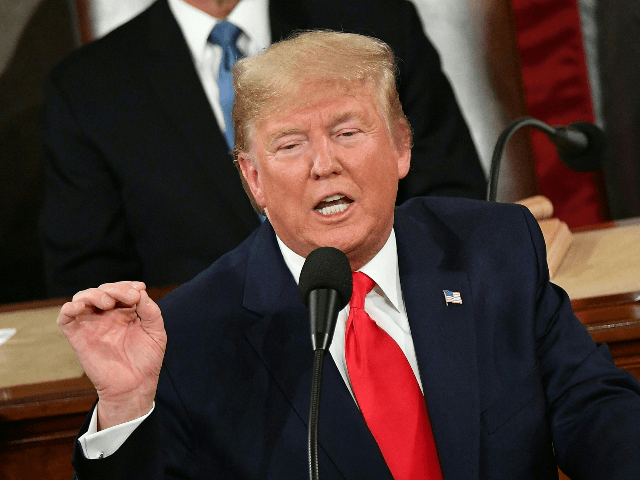President Donald Trump downplayed the goal of pro-American immigration reform in his 2020 State of the Union speech, providing only a sketch of a much-touted 2021 reform push.
He said:
To build on these historic gains, we are working on legislation to replace our outdated and randomized immigration system with one based on merit, welcoming those who follow the rules, contribute to our economy, support themselves financially, and uphold our values.
The issue is vital to his presidency, in part because Americans’ wages are reduced by the annual inflow of 1 million legal immigrants alongside the routine inflow of illegals and temporary visa-workers. The huge inflow of legal immigrants also imposes chaotic diversity on the nation’s communities, while it shifts wealth to the coastal cities and political power towards the Democrats.
The short and bland statement gives Trump room to zig-zag between the competing demands of his voters and his donors during the hugely expensive election.
His voters support the lower-migration policy because it raises wages by reducing the inflow of government-supplied immigrant workers. Rising wages “are good for national politics if you’re a politician, for sure,” Tom Donohue, the long-standing chief of the U.S. Chamber of Commerce said in early January. He added:
And it’s good for national politics if you want people to feel more engaged in the healthy part of the economy and go out and vote to keep it that way. If you look the other side of your question: ‘Are decreasing wages good for national politics?’ Hell, no.
…
If you have ten people for every job, you’re not gonna have a drive [up] in wages. [But] if you have five people for every ten jobs, wages are going to go up.
Trump did not link his immigration policy to the rising level of blue-collar wages:
Since my election, the net worth of the bottom half of wage-earners has increased by 47 percent — 3 times faster than the increase for the top 1 percent. After decades of flat and falling incomes, wages are rising fast — and, wonderfully, they are rising fastest for low-income workers, who have seen a 16 percent pay-increase since my election. This is a blue collar boom.
His lower migration, higher wages policy is bitterly opposed by investors, nearly every business lobby, most Democrats, and many Republicans. Their opposition killed Trump’s 2018 plan to cut legal immigration by roughly 50 percent.
Those investor groups want Trump to endorse migration increases before the 2020 election.
Trump’s 2020 speech did not echo business’ demand for more workers, even though he said in January that companies need more foreign workers.
“We have to allow smart people to stay in our country — if you graduate number one in your class at Harvard [if] you graduate from the Wharton School of Finance,” Trump told Fox News. “If we tell smart people to get the hell out, that’s not America first.”
“I have so many companies coming into this country, you’re not going to have to worry about it,” Trump said in the interview, adding, “It is always going to be a shortage [of workers] … We have so many companies coming in from Japan … [and] China now.”
The 2020 speech is also very different from his 2019 State of the Union speech, when he said he wanted to welcome legal immigrants “in the largest numbers ever.”
He said, “Legal immigrants enrich our nation and strengthen our society in countless ways. I want people to come into our country, in the largest numbers ever, but they have to come in legally.”

COMMENTS
Please let us know if you're having issues with commenting.